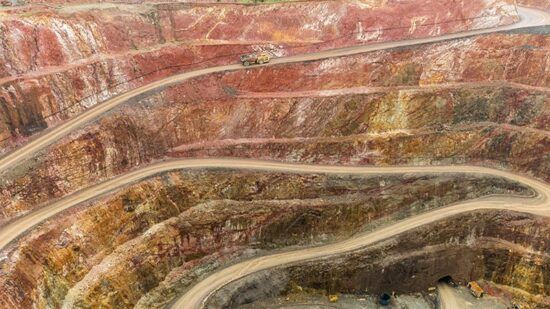China needs massive investment to meet its commitment to achieving carbon neutrality by 2060. Estimates range from some $6trn up to $16trn.
President Xi Jinping announced his country’s historic goal via a video link at the United Nations General Assembly in New York last September. Carbon neutrality means China would have to remove as much carbon from the atmosphere as it emits.
The announcement was a big deal because China, one the world’s worst polluters, according to the CAIT Climate Data Explorer, is also an economy that’s on track to overtake the US as the largest.
Things are changing because policymakers recognised that years of economic growth driven by heavy industry and fixed-asset investment had taken a serious toll on the environment.
Economic planners set medium-term goals known as Five-Year Plans. The latest, the 13th, was adopted in March 2016. It placed the environment at the centre of development targets. The carbon neutrality target was simply the next step in a series of recent measures.
However, restructuring an entire economy the size of China’s will come with a massive bill, even if, as we expect, the cost of wind and solar equipment continues to fall. Based on the lower end of estimates, this will be in the order of some $163bn a year over the next four decades or so.
That means investments (including foreign investment) into the growing universe of companies that supports the new ‘green’ industries helping the world transition to a more sustainable way of living.
Strategic planners in Beijing have ensured that many of these companies – those in the ‘value chain’ of green industries – are located within China. That’s why the country is already a world leader in wind, batteries and solar production.
For example, its wind turbine-makers have 26% of the global market; its battery-makers account for 78% of the world’s battery manufacturing capacity; the country is also responsible for 91% of silicon wafer-production (used in harnessing solar energy), according to the Sanford Bernstein paper titled Hydrogen: Making money in fuel cells – lessons from solar, wind and batteries paper.
One way for investors to gain exposure is via the solar energy sector. We prefer the equipment-makers and other firms that operate within the value chain, rather than investing in solar farms. Intense competition has created a handful of very strong companies, which bodes well for future returns.
For example, we like LONGi Green Energy Technology, a Xi’an-based company that is a global leader in the solar monocrystalline (mono) wafer industry. LONGi is benefiting from structural changes affecting solar panel production. Mono wafers are more efficient than multi-crystalline wafers and LONGi has a 39% share of this market.
Equipment-makers are also an attractive option in the wind sector. Companies that make wind turbines ought to benefit from a market that has already consolidated and is ready to supply growing local energy demand. Decarbonisation – the shift away from fossil fuels – is a big help, while barriers to entry for local and overseas firms are reasonably high.
Companies such as Xinjiang Goldwind Science & Technology, a Beijing-based world-beating manufacturer of wind turbines, wind turbine components and wind power generation sets. Goldwind is also involved in wind farm development. We’re positive on its long-term prospects in the context of China’s net-zero-carbon goal.
Meanwhile, the outlook for fossil fuels is less positive. Fossil fuels are expected to account for only 20% of China’s energy mix by 2060, down from 85% in 2019, according to a Sanford C. Bernstein forecast. Fossil fuel companies will need to manage the transition to a low- or net-zero-carbon economy. This will create risks, as well as opportunities.
Most of this reduction in fossil fuel consumption will come from transport and power – China has made big bets on electric vehicles (EVs) in addition to renewable energy. There are opportunities for investors here as well, including those among the makers of batteries that power EVs. The pace of change will only accelerate as the technology improves and the associated costs fall.
What’s more, as China seeks to upgrade its national electricity grid, there are investment opportunities in those companies that help the grid become ‘smart’ – providing it with the flexibility and capacity to deal with the growing contribution of wind and solar energy.
China’s plan to clean up its environment is, like the size of the country and economy, simply colossal. It also represents a colossal opportunity for the companies involved in this transition, as well as for investors around the world.








